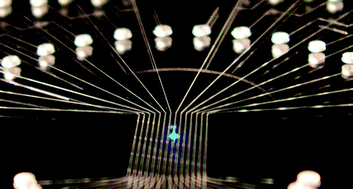The autofluorescence of plastic materials and chips measured under laser irradiation
Abstract
Plastic materials have the potential to substitute for glass substrates used in microfluidic and μTAS systems adding flexibility in materials' choices. Optical quality plastic materials with a low autofluorescence are crucial for optimal detection by fluorescence and laser induced fluorescence techniques. This paper summarizes a series of optical investigations on commercially available plastic chip materials (PMMA, COC, PC, PDMS) and chips made from those materials. Intrinsic optical constants of plastic materials—refractive index for bulk materials—determined by


 Please wait while we load your content...
Please wait while we load your content...